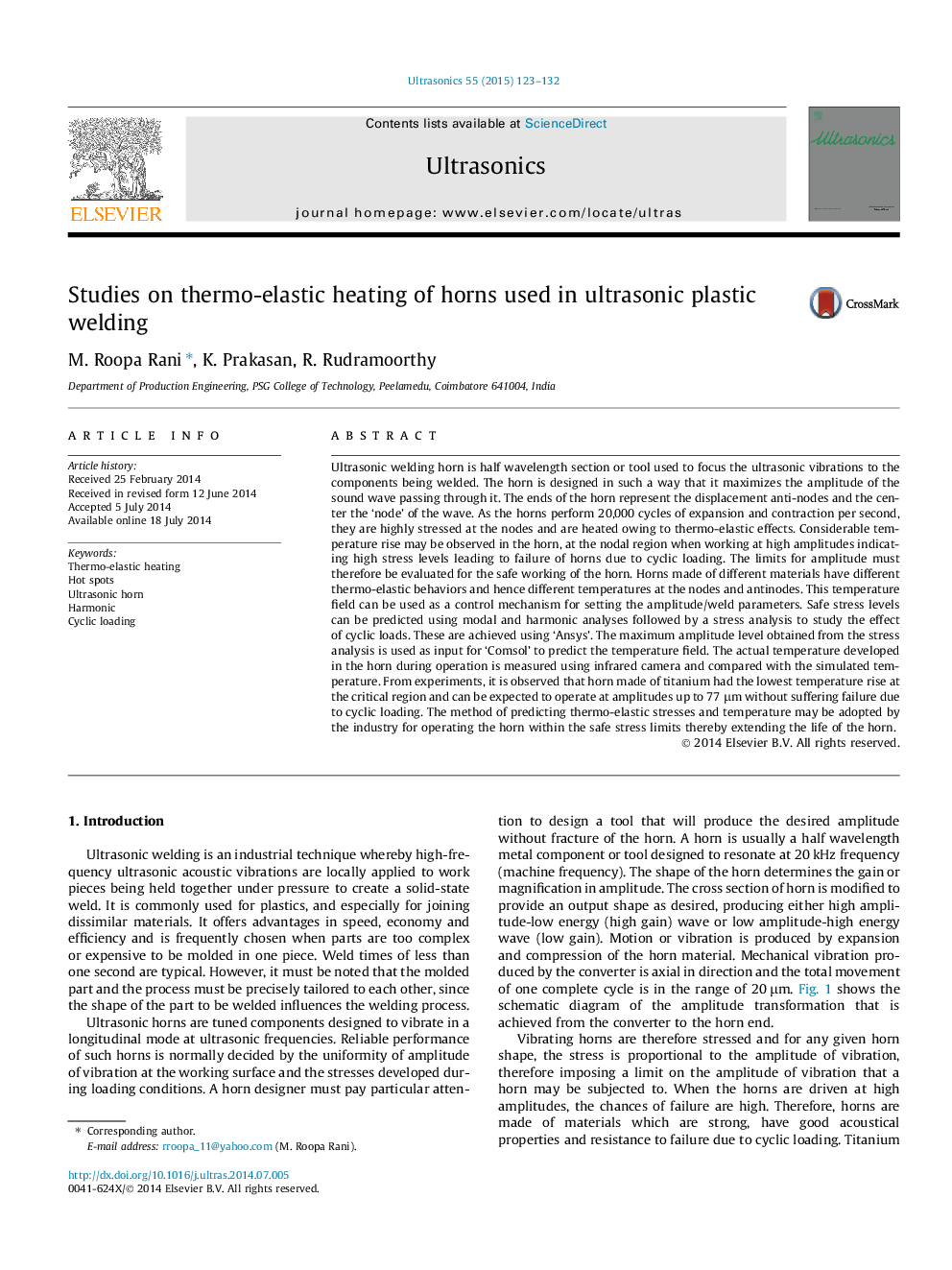| کد مقاله | کد نشریه | سال انتشار | مقاله انگلیسی | نسخه تمام متن |
|---|---|---|---|---|
| 1758773 | 1523214 | 2015 | 10 صفحه PDF | دانلود رایگان |
• Ultrasonic horns are highly are highly stressed tools and considerable temperature rise may be observed in the horn.
• Horns made of different materials have different thermo-elastic behaviors and hence different temperatures at the nodes.
• The maximum amplitude level obtained from cyclic loads analysis is used in ‘Comsol’ to predict the temperature field.
• The actual temperature developed in the horn during operation is measured using infrared camera.
Ultrasonic welding horn is half wavelength section or tool used to focus the ultrasonic vibrations to the components being welded. The horn is designed in such a way that it maximizes the amplitude of the sound wave passing through it. The ends of the horn represent the displacement anti-nodes and the center the ‘node’ of the wave. As the horns perform 20,000 cycles of expansion and contraction per second, they are highly stressed at the nodes and are heated owing to thermo-elastic effects. Considerable temperature rise may be observed in the horn, at the nodal region when working at high amplitudes indicating high stress levels leading to failure of horns due to cyclic loading. The limits for amplitude must therefore be evaluated for the safe working of the horn. Horns made of different materials have different thermo-elastic behaviors and hence different temperatures at the nodes and antinodes. This temperature field can be used as a control mechanism for setting the amplitude/weld parameters. Safe stress levels can be predicted using modal and harmonic analyses followed by a stress analysis to study the effect of cyclic loads. These are achieved using ‘Ansys’. The maximum amplitude level obtained from the stress analysis is used as input for ‘Comsol’ to predict the temperature field. The actual temperature developed in the horn during operation is measured using infrared camera and compared with the simulated temperature. From experiments, it is observed that horn made of titanium had the lowest temperature rise at the critical region and can be expected to operate at amplitudes up to 77 μm without suffering failure due to cyclic loading. The method of predicting thermo-elastic stresses and temperature may be adopted by the industry for operating the horn within the safe stress limits thereby extending the life of the horn.
Journal: Ultrasonics - Volume 55, January 2015, Pages 123–132
